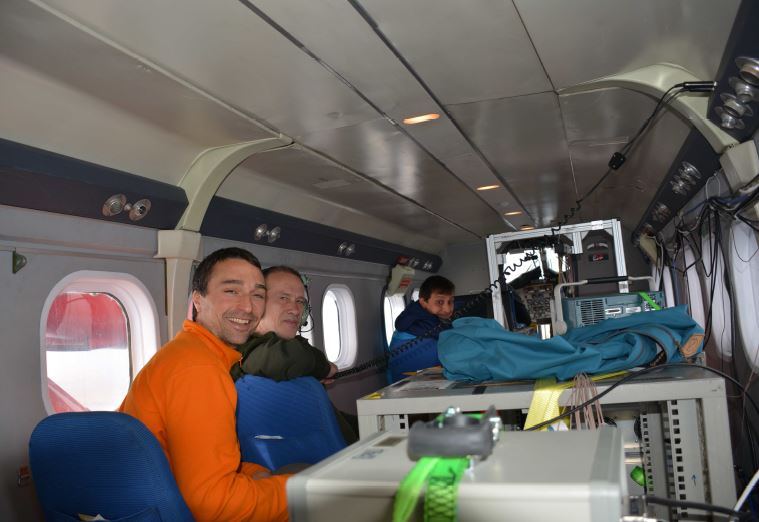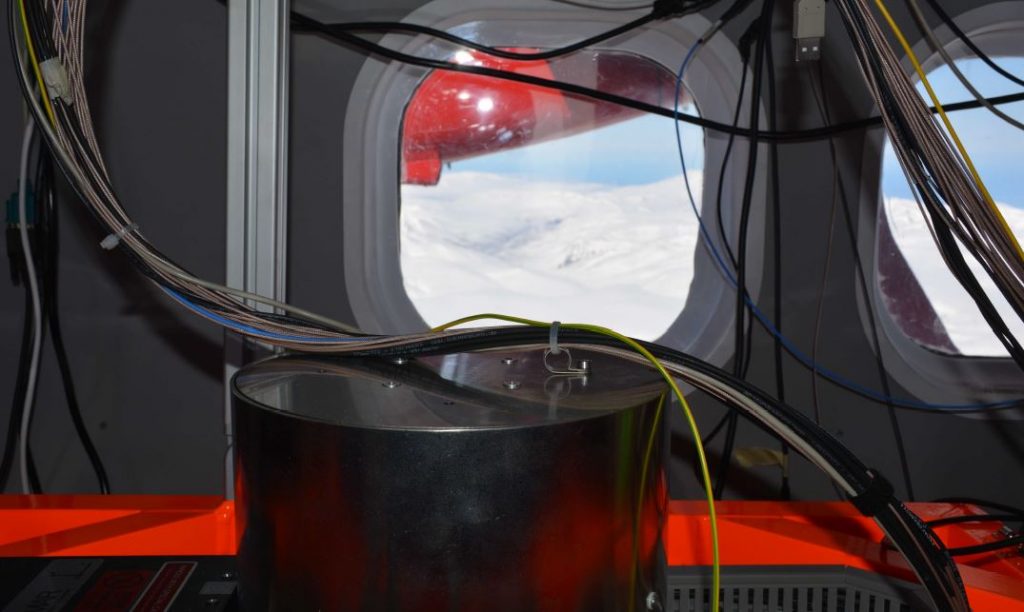The recent international field campaign that took place in the Arctic to validate measurements from ESA’s CryoSat ice mission and to test the potential of using a new way of measuring ice in the future has been a huge logistical effort. While ice has been the focus, the campaign also offers a great opportunity to take other measurements and make sure the campaign benefits science as much as possible.
So, the Technical University of Denmark (DTU) and the French national aerospace research centre ONERA are taking advantage of the campaign to test a new gravimeter instrument that measures gravity.
ESA’s GOCE mission mapped variations in the Earth’s gravity field with extreme detail and accuracy, but airborne and maritime gravity surveys are still needed to achieve higher resolution measurements in some areas of interest.
It has been shown that atomic quantum sensors are a newly emerging technology that can be used for measuring the Earth’s gravity field. While on-board classical gravimeters typically suffer from drift, Cold Atom Interferometers are highly accurate over the entire frequency range.
DTU and ONERA are preparing a proof of concept mission to evaluate the performances of a new absolute gravimeter instrument relying on this technology.

Setting up the aircraft. (ONERA)
Ground measurements have already been carried out with interesting results – in particular, a marine survey that showed the capability of this technology in a fast changing environment.
The CryoVEx/KAREN 2017 campaign is now an excellent opportunity to make measurements from an airborne platform.

On board. (ONERA)
Alexandre Bresson from ONERA and team has already spent a week in Iceland with an airborne version of the new gravimeter.
After the kitting out a Norlandair aircraft with racks and boxes, they started up and tested the instrument during a short flight around Akureyri.

View through cables to glacier. (ONERA)
They then flew from Akureyri to Snæfellsnes measuring all the way. So far all seems to be running well and the data are being analysed.
Next up is to map the Vatnajökull Glacier.
Post from Alexandre Bresson (ONERA)








Discussion: no comments